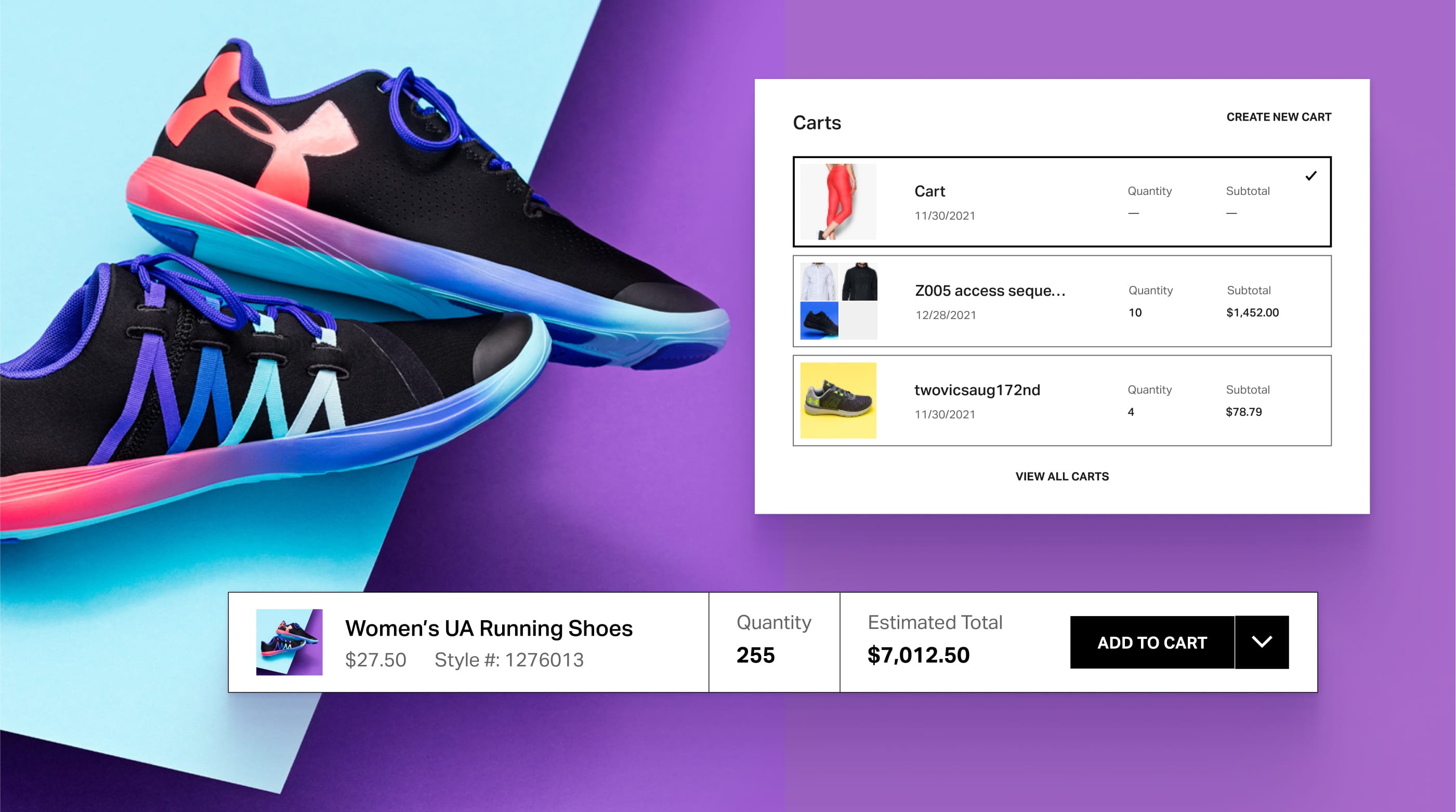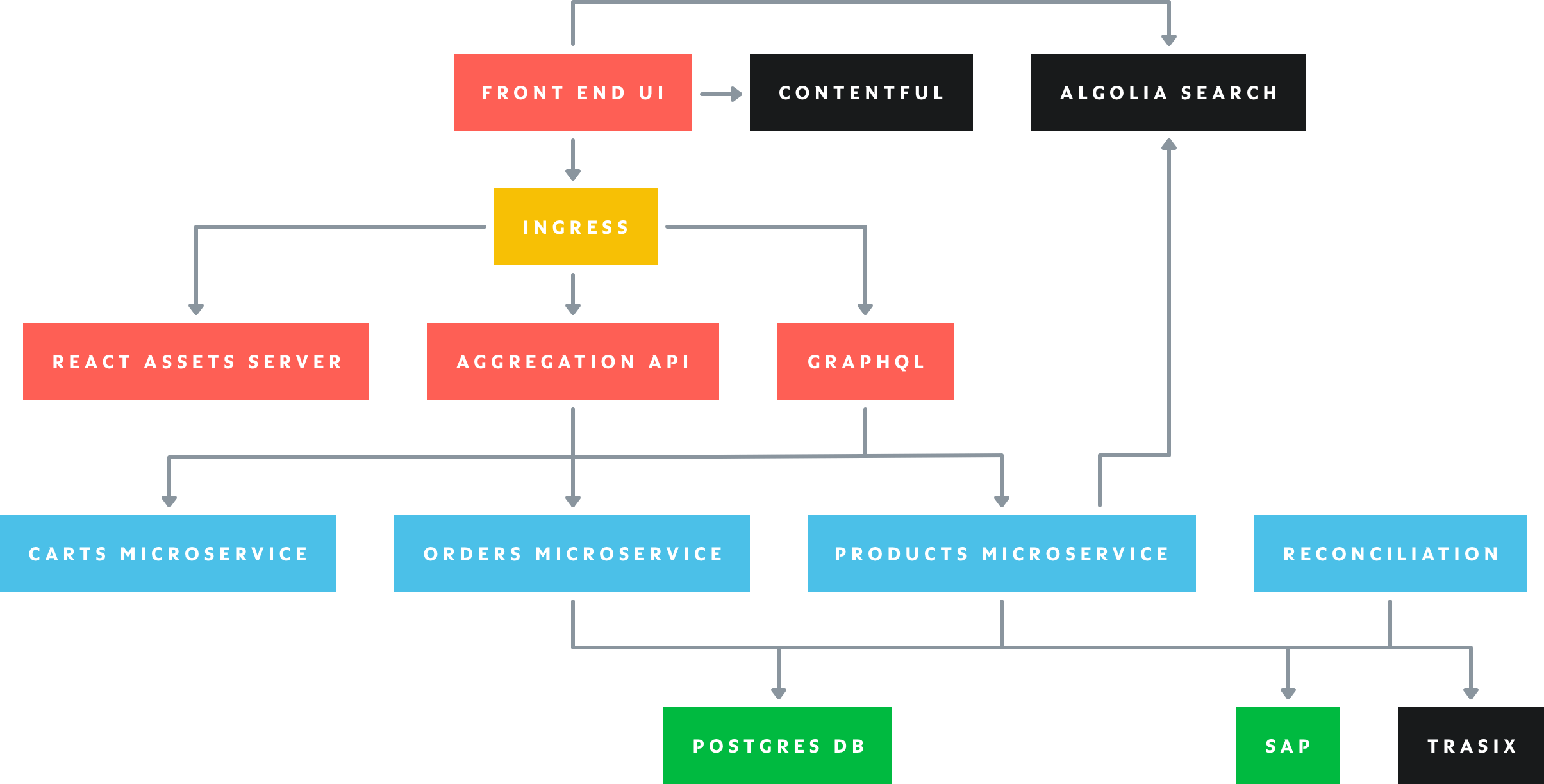Our Response: Optimizing Under Armour’s E-commerce Experiences for Enhanced Visibility and Operational Efficiency
B2C: Improve Conversions Using Next.js to Optimize Product Pages for Search Engine Visibility
Site speed is crucial for e-commerce competitiveness, affecting conversion rates, average order values, and overall revenue. Google Core Web Vitals—metrics that assess page load performance—also influence visibility in search rankings. Designing an intuitive checkout process and optimizing content isn't enough, and a Next.js migration was essential to boost revenue and outpace competitors.
Leveraging Next.js for Increased Product Page Discovery
MojoTech transformed Under Armour's online presence by completely overhauling its front end. By migrating to Next.js, we introduced advanced prerendering capabilities, including Server-Side Rendering (SSR) and Static Site Generation (SSG), significantly enhancing SEO by accelerating page load times. These technologies enabled quick rendering of content-rich pages and optimized the performance of the integration layer, leading to a remarkable improvement in site efficiency.
Enhance Checkout and Purchase Experiences
MojoTech enhanced the checkout and purchase experiences on Under Armour's e-commerce platform, implementing functionalities to meet diverse consumer needs. We integrated SAP for streamlined shopping cart and checkout processes, ensuring a seamless and efficient transaction flow.
Additionally, we expanded payment flexibility by incorporating Buy Now, Pay Later (BNPL) services and multiple payment methods, including popular options like Apple Pay. These enhancements simplified the buying process and provided a more adaptable and user-friendly shopping environment, encouraging higher conversion rates and improving overall customer satisfaction.
B2B: Develop a Scalable Order Management System Leveraging Cloud-native Architectures
While this new system initially supported the EU, it would eventually underpin their North American B2B platform. As such, it was paramount that the system scaled to meet Under Armour's needs. In comes the power of cloud-native architectures and the technologies that enable it.
Service Separation
MojoTech swiftly identified natural system boundaries, enabling the segmentation of platform areas into distinct services. This strategy facilitated a seamless, incremental transition of Under Armour's server code from Scala to Go, leveraging existing Go subsystems already performing effectively alongside legacy services.
Containerization
MojoTech streamlined Under Armour's infrastructure by deploying each service in a Docker container explicitly designed for its function. With clear boundaries and minimal dependencies, these semi-isolated containers simplify future maintenance and enhance security by modularizing the environment. For instance, a container dedicated to user browser experience is restricted to that function alone, bolstering security and system management.
Orchestration
Using Kubernetes, we established a structured framework to define and manage production deployments and the interrelations between service instances. For instance, the Orders service is scaled to handle peak loads during high-demand periods, while the User Identity service maintains consistent availability. Additionally, we configured dependencies such that users interacting with a specific version of the carts service receive a corresponding version of the web service, ensuring a seamless user experience.
Product Search & Order Management
MojoTech enhanced Under Armour's product search and order management by integrating Algolia to create an advanced and intuitive search interface. This upgrade made product listings fully browsable and searchable, significantly improving user experience and platform accessibility. B2B customers can effortlessly locate products with refined search features that efficiently process queries and instantly deliver relevant results.

